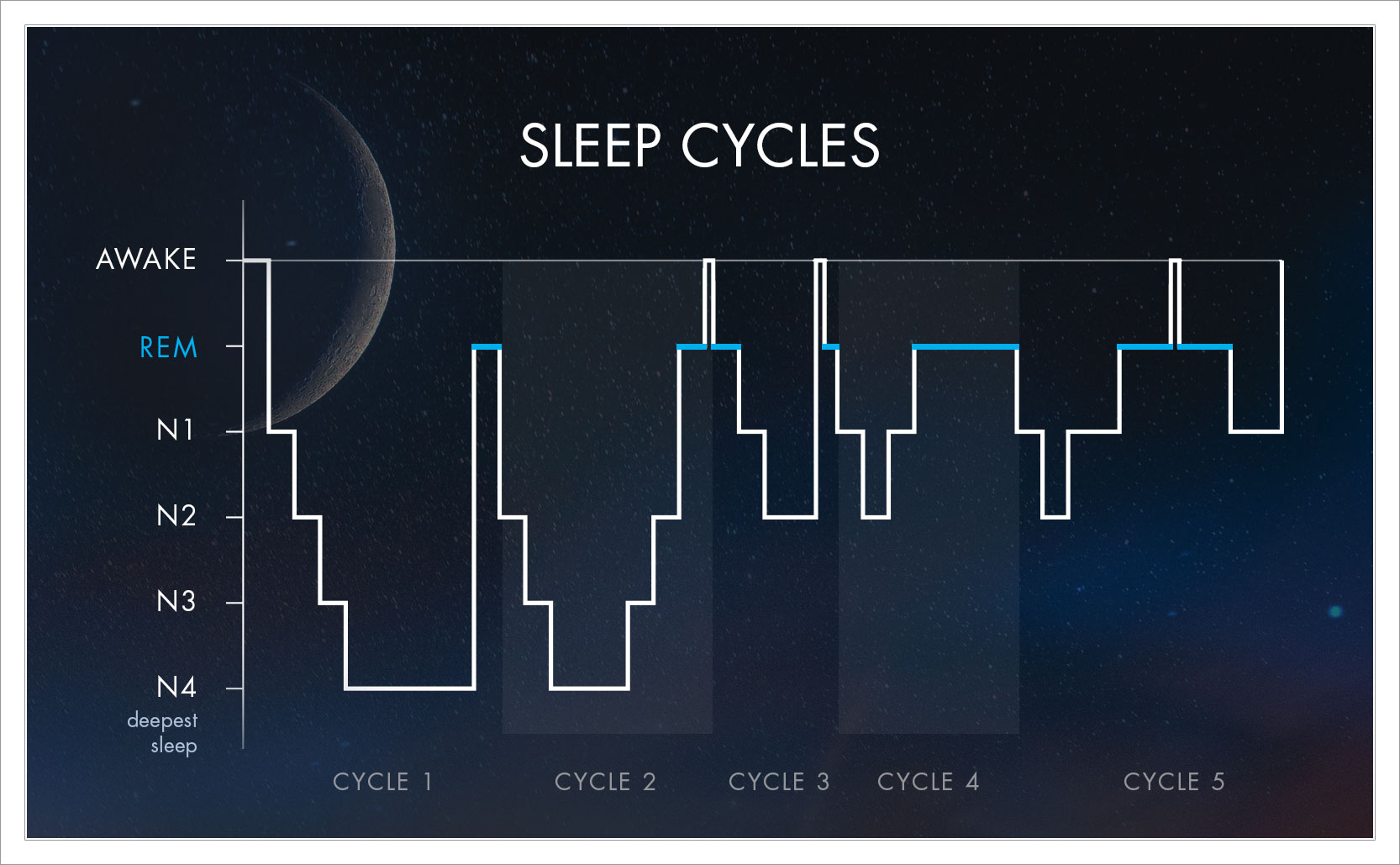First Sleep & Second Sleep
We sleep in cycles and adult humans aren’t designed for 8 uninterrupted hours of sleep.
Sleep Cycles
When we fall asleep we go from consciousness to unconsciousness, but within unconsciousness there are different stages to sleep. We descend from N1 (which is a very light sleep) to N2 (a restful sleep) down to N3 and sometimes even N4 (which are the deepest and most re-energizing stages). But we don’t just do this once, emerging on the other side wide awake in the morning. More like a roller coaster, we travel down from light sleep to deeper sleep and back up several times throughout the night. Each time we do this is considered a sleep cycle, we have about 5 sleep cycles per night, and each one takes between 60-90 minutes adding up to around 7.5hrs of sleep.

At the end of the each sleep cycle, instead of going back to N1, we enter a very different kind of sleep known as rapid eye movement sleep (REM sleep) – from which the band REM is named. REM is so named because our eyes are moving around despite being closed. This is especially interesting because during REM sleep our eyes are on the short list of things that we actually can move. During REM sleep your body becomes paralyzed with the exception of your eyes, heart, and lungs. One potential reason for this is that during REM sleep we dream, and paralyzing our limbs is a safety feature that prevents us from acting out our dreams and possibly punching or kicking in our sleep. When REM sleep ends we either start a new sleep cycle or we wake up, but we don’t just wake up the next morning.
First & Second sleeps
While young children and teenagers can sleep uninterrupted throughout the night (and sleep longer), it is unusual for adults to do the same. We think we’re supposed to because we used to as kids, and society tells you to sleep for 8 straight hours, but to sleep uninterrupted throughout the night as an adult is fairly unusual. For millennia it was common practice to go to bed at sundown, sleep for about 4 hours, wake up for an hour or two, do some activities, and eventually go back to sleep for a few hours until sunrise. So instead of one period of sleep there were two, known as first sleep and second sleep.
What people did in this liminal time between first and second sleeps varied. Some would do the normal things of going to the bathroom or reading, but others might smoke, some might do some light house work, and some even visited neighbors from time to time. This waking period between sleeps was so common there were even special prayer books for these hours.
While in some more primitive tribes this idea of two sleeps is still common (such as in parts of Nigeria), this practice began to die out in the west in the 17th century. As people gradually pushed their bedtime back the time between sleeps grew shorter. At first it was just the wealthy, who could afford to burn more candles and stay up longer. Eventually larger cities began to illuminate some of the streets with lamps which extended waking hours for people of all classes. Coffee houses also became more popular in Europe during the 17th century which kept people wired for longer after the sun went down. But what really killed off first & second sleep was the industrial revolution of the 19th century. Through a combination of increased time spent in factories, gas & electric lighting becoming more prevalent, and a focus on efficiency, it became unfashionable to go to bed so early only to spend the middle of the night awake in activity.

The next time you find yourself frustrated at being awake in the middle of the night when you “should” be asleep, you can reframe the situation knowing that your body might know better. Having a biphasic sleep pattern and waking up during the night is a normal part of human physiology. Choosing to be active in the middle of the night like your ancestors once did, is optional.


